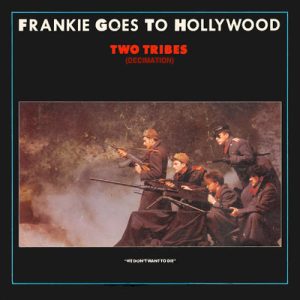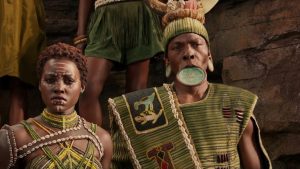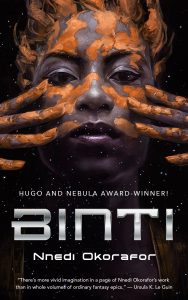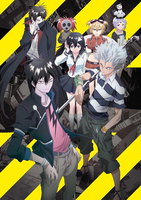![]() It seems a bit odd to me to be talking about tribes and tribalism here in the early part of the twenty-first century. As a long time reader of science fiction and one who held the firm belief that science and technology would lift us out of the need for such outdated concepts, the whole idea of tribalism persisting is anathema to me.
It seems a bit odd to me to be talking about tribes and tribalism here in the early part of the twenty-first century. As a long time reader of science fiction and one who held the firm belief that science and technology would lift us out of the need for such outdated concepts, the whole idea of tribalism persisting is anathema to me.
Yet, here we are in 2023 and the idea, indeed, the romance of tribes, seems to have tightened its grip on the public consciousness. Indeed, in some ways tribalism has taken root in the public’s subconscious.
Maybe we should define our terms before we dive in. To do that I will be utilizing the trusted tool of the lazy researcher; Wikipedia.
According to Wikipedia: “The term tribe is used in many different contexts to refer to a category of human social group… The concept is often contrasted by anthropologists with other social and kinship groups, being hierarchically larger than a lineage or clan, but smaller than a chiefdom, nation or state.”
The other thing about the concept of dividing nations up into tribes, aside from the fact that it smacks heavily of colonialism, is that it is just that… it’s divisive.
 As that venerated philosopher, Frankie Goes to Hollywood once said: “When two tribes go to war, A point is all you can score.”
As that venerated philosopher, Frankie Goes to Hollywood once said: “When two tribes go to war, A point is all you can score.”
And yet, here we are, dividing ourselves into tribes and risking war (even if it’s just an internet flame war).
There’s irony for you; the one piece of technology that was designed to bring humanity together, to show us that we are all equal and that no one people is better than any other, the World Wide Web, has been used to create more and more modern tribes.
I suppose I shouldn’t really be surprised. Modern sociological research has shown us that the World Wide Web, far from bringing us together has, in fact, created a new form of tribalism… Neotribalism.
Neotribalism
Neotribalism, also known as modern tribalism or new tribalism, is a sociological concept which postulates that human beings have evolved to live in tribal society, as opposed to mass society, and thus will naturally form social networks constituting new tribes. French sociologist Michel Maffesoli first used the term neotribalism in a scholarly context in his 1988 book The Time of the Tribes.
Maffesoli predicted that as the culture and institutions of modernism declined, societies would embrace nostalgia and look to the organizational principles of the distant past for guidance, and that therefore the post-modern era would be the era of neotribalism.
Social Network Tribes
Social networks certainly seem to have their tribes. From the social network aficionados themselves – Youtubers, Twiter Users, Tik-tokers, or Facebook Users – to the breaking down of tribes within the tribes, social media offers up a chance to find your tribe. Tribes are no longer merely accidents of geography. A tribe can be a social group of like-minded human beings. Sports fans. Foodies. Bird watchers. Stamp collectors. Comic book geeks. Sci-fi nerds. We all heed the siren call of the social media to find our counterparts all over the world.
Our tribes.
 The 8 Tribes of SciFi is an article written by Damien Walter. Walter is a writer on sci-fi and geek culture for The Guardian, BBC, WIRED and graduate of the Clarion writers workshop. He is also the producer of the Science Fiction Podcast and the administrator of the Science Fiction Group on Facebook.
The 8 Tribes of SciFi is an article written by Damien Walter. Walter is a writer on sci-fi and geek culture for The Guardian, BBC, WIRED and graduate of the Clarion writers workshop. He is also the producer of the Science Fiction Podcast and the administrator of the Science Fiction Group on Facebook.
His contention is that there are tribes among science fiction fans “These eight groupings of sci-fi writers and their fans cut across the commercial marketing categories defined by publishers, and are unified instead by shared values and interests.” Walter claims.
The tribes are: Commercial Storytellers, The Weirds, Hard Sciencers, Military Conservatives, Progressive Fantasists, YA Adventurers, The LitFic Tourists and the Sexy Beasts.
As with all attempts to categorize science fiction, Walter’s list is somewhat reductive (and, yes, that is the pot calling the kettle black) but it is most certainly an entertaining read. You can check it out here.
Tribes in the Movies
 It’s probably no coincidence that two of the biggest science fiction/comic book blockbuster movies feature a plethora of tribes. Avatar: Way of Water reunites audiences with the Na’vi tribe which is now further broken down into sub-tribes, the forest-dwelling Omaticaya and the water-dwelling Metkayina. Both tribes are peaceful and only resort to violence when their land is seized upon by humans.
It’s probably no coincidence that two of the biggest science fiction/comic book blockbuster movies feature a plethora of tribes. Avatar: Way of Water reunites audiences with the Na’vi tribe which is now further broken down into sub-tribes, the forest-dwelling Omaticaya and the water-dwelling Metkayina. Both tribes are peaceful and only resort to violence when their land is seized upon by humans.
And what about Wakanda? In Black Panther: Wakanda Forever, the most technologi9cally advanced nation in the world is divided into tribes – five tribes! The River tribe, the Mining tribe, the Merchant tribe, the Border tribe and the Mountain tribe – the Jubari.
Of course the tribes are united in defense of Wakanda from other tribes, be it the Americans or Namor and his Atlanteans.
Literary Tribes
Tribes are still examined from time to time in science fiction literature. Tribes are a useful metaphor for larger groups, either ethnic, national or idealogical.
Eastern Standard Tribe, for example, is a 2004 science fiction novel by Canadian writer Cory Doctorow. The novel takes place in a world where online “tribes” form, where all members set their circadian rhythms to the same time zone even though members may be physically located throughout the world.
 Binti is an Africanfuturist science fiction horror novella written by Nnedi Okorafor in 2015. The winner of multiple prominent literary awards, including the 2016 Hugo Award for Best Novella and the 2016 Nebula Award for the same category, the main character is a member of the Himba people. The Himba are an indigenous people living in northern Namibia and southern Angola.
Binti is an Africanfuturist science fiction horror novella written by Nnedi Okorafor in 2015. The winner of multiple prominent literary awards, including the 2016 Hugo Award for Best Novella and the 2016 Nebula Award for the same category, the main character is a member of the Himba people. The Himba are an indigenous people living in northern Namibia and southern Angola.
Binti is the first of her people to be accepted into the prestigious intergalactic university Oomza Uni. While in transit, her transport ship is hijacked by the Meduse, a jellyfish-like alien species that was previously at war with the Khoush, another human ethnic group. Binti eventually becomes the mediator between the groups. Intra-tribal prejudice and Interspecies war are themes that run throughout the three novellas.
The Binti novellas are being developed as a television series, but if you can’t wait that long there is currently a series on Netflix called Tribes of Europa. This is a German made series set in a post-apocalyptic Europe.
So what is your tribe? Do you identify yourself with one, or are you an iconoclast? Conformist or non-conformist? Stick with the group or blaze your own trail?
Sound off in the comments.
Source: Auto Draft










